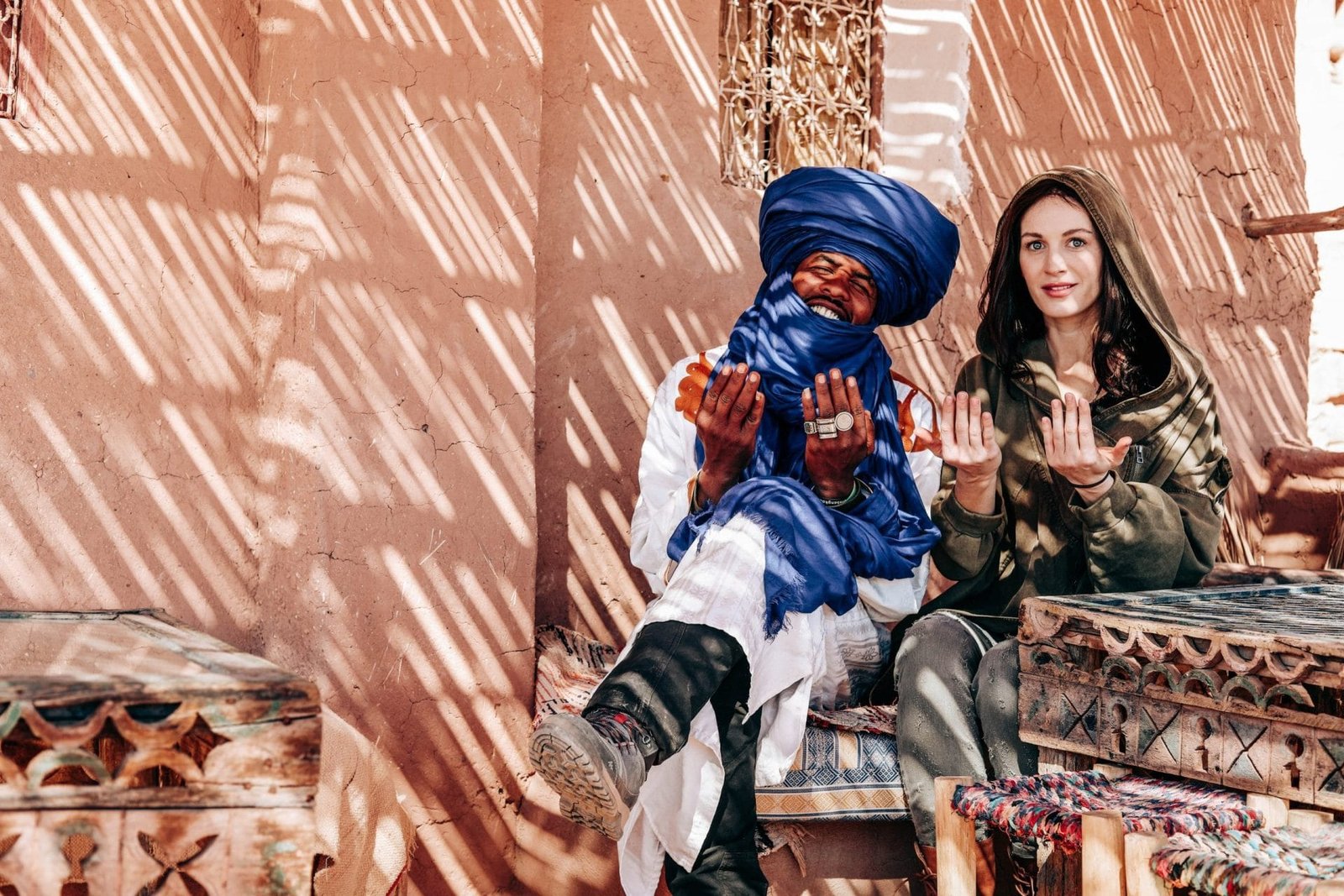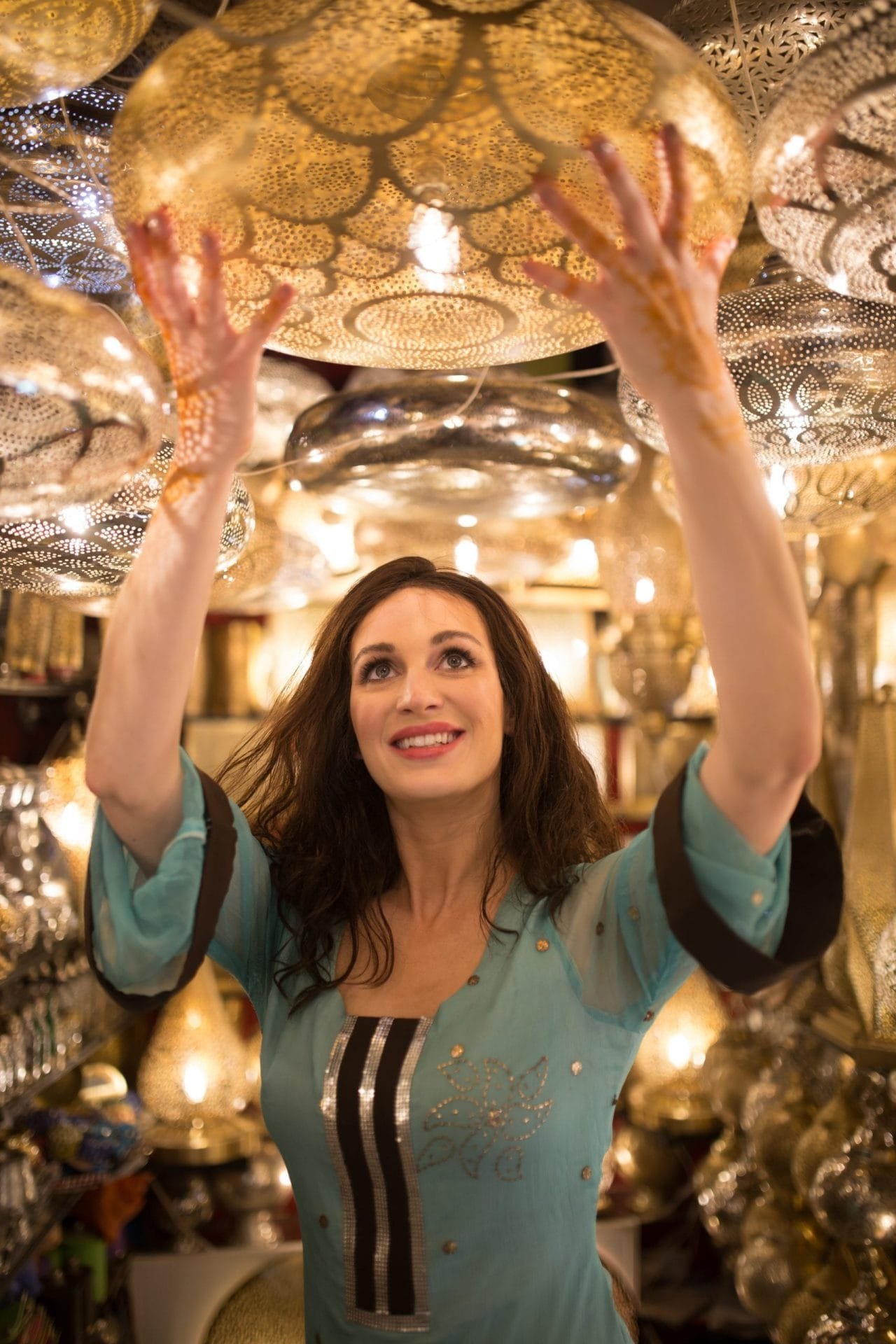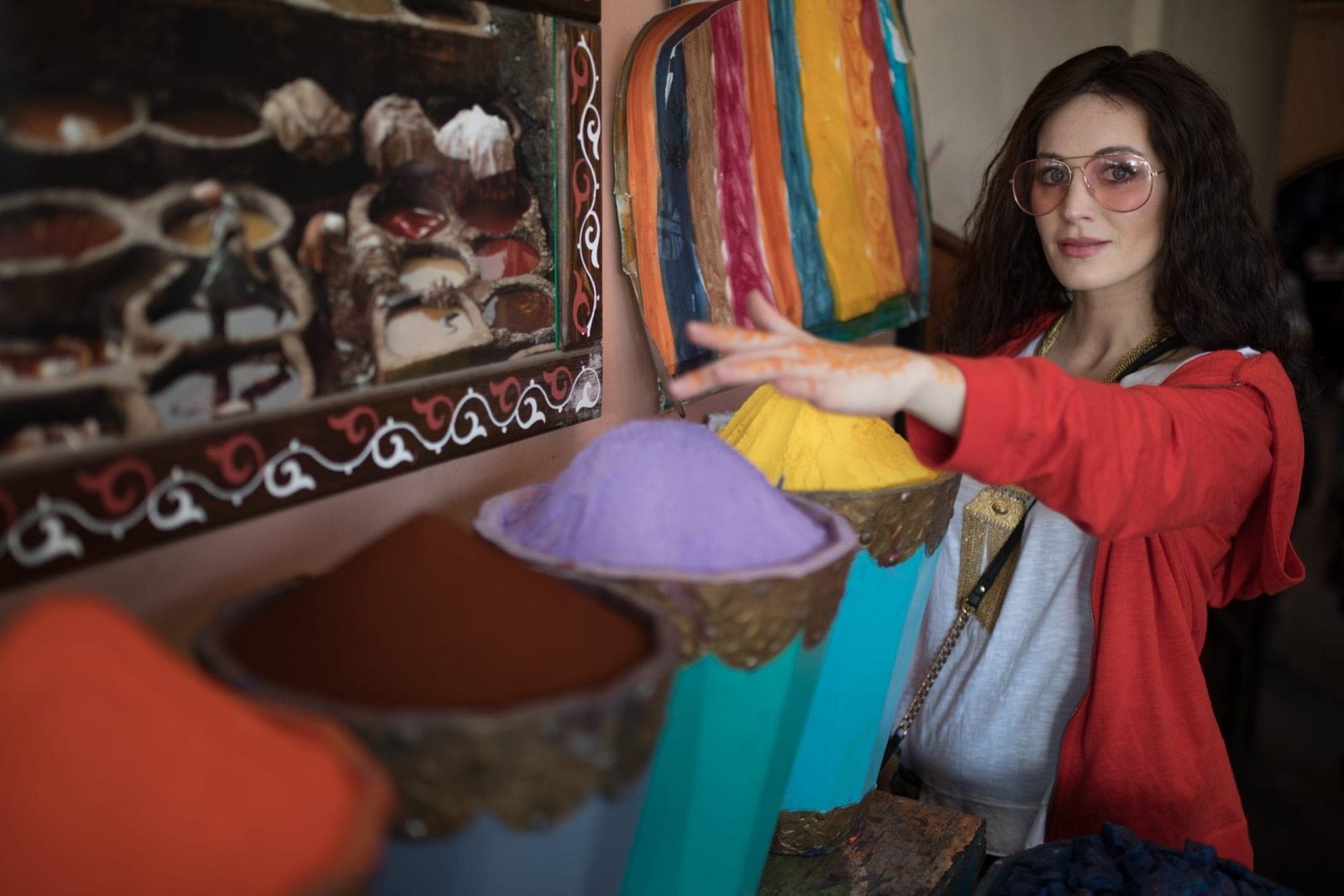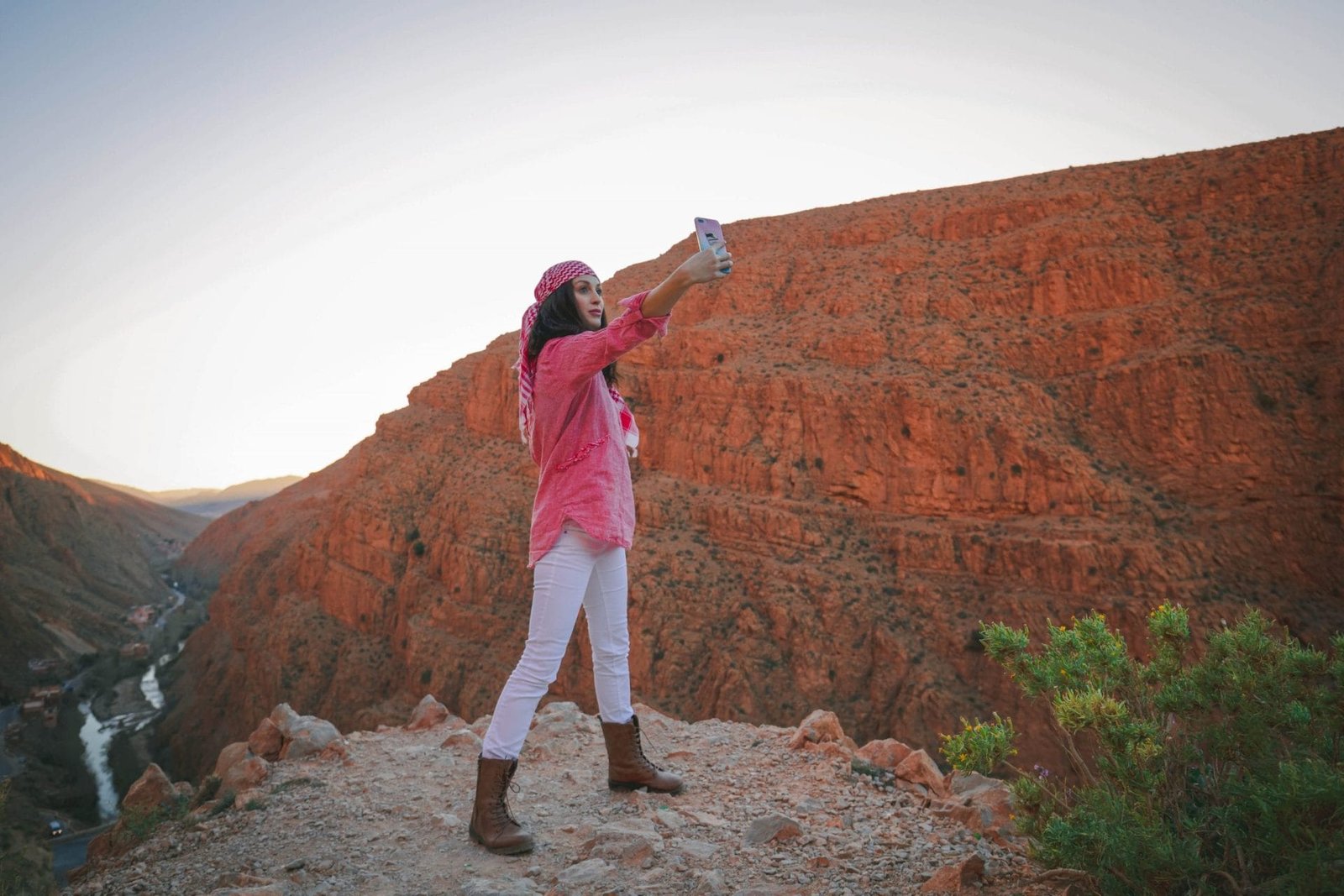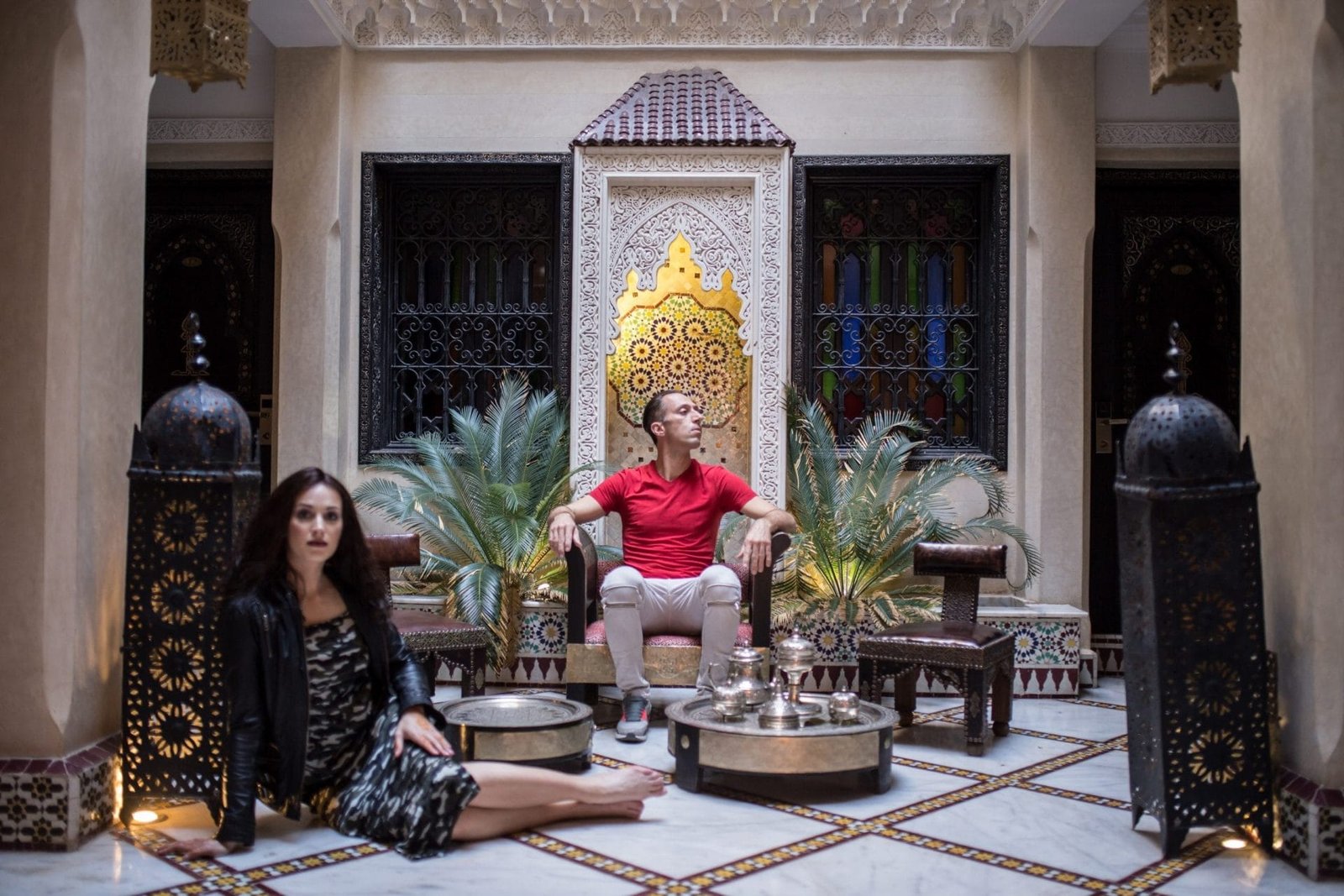
8 Fabulous Things To Do in Marrakesh, Morocco
Nicknamed “Rose City” or “Red City” due to its rose-tinted facades, there is a little bit of everything in the hottest city of Morocco. Marrakesh is Morocco’s most popular vacation destination, for each traveler can find something that speaks to his soul. It’s hectic and dynamic spirit, historical sights, mystique ambient decor of the riads and hotels.
Best things to do in Marrakesh
The best word to describe Marrakesh would be “eclectic”.
Utterly unique paradise. Thanks to Berber, Spanish, French and Arab cultural influences, all blended in one city and created an entirely unique destination .
“Things to do in Marrakesh” , “Must do in Marrakesh” and other travel ideas, hidden corners and gems could make up for a full blog itself. I’ve got just a blog post for you with my 8 musts do’s .
1 – Get a henna tattoo in Marrakesh
But if the hustle and bustle you see on the square is a big part of the east’s culture.
Henna art is an essential part of the culture of Morocco,just like couscous and mint tea.
Tied with the wedding tradition and religious celebrations, today you don’t have to be Muslim to get a henna tattoo.
You might have seen it in India or Asia, but henna originated in North Africa – Morocco, to be more exact.
I got my hands and feet tattooed. It was quick, super cool to watch a local girl, covered in a floor-length multi-layered dress with huge faux lashed and nails do this pretty detailed art on my hands within ..5 minutes.
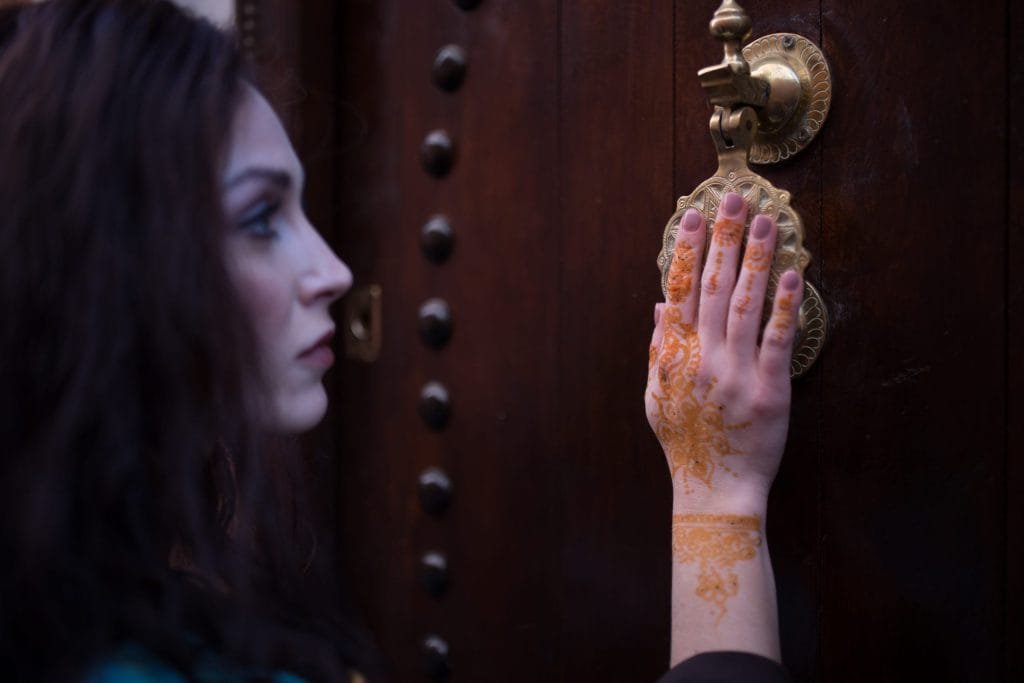
If you are game, you can get your feet too. Marakesh is a place designed to take your Instagram feed to the next level. The henna tattoo will take it way beyond.
My henna tattoo came off within a week, but I had something like “scars” – white areas of the painted ornament of=n parts of my skin for months, even close to a year. If you have susceptible skin (I don’t), you should probably give it a thought.
If you are not comfortable getting your cool henna tattoo from the street artist at the buzzing square but really want one- ask your riad to arrange for an artist to travel to you.
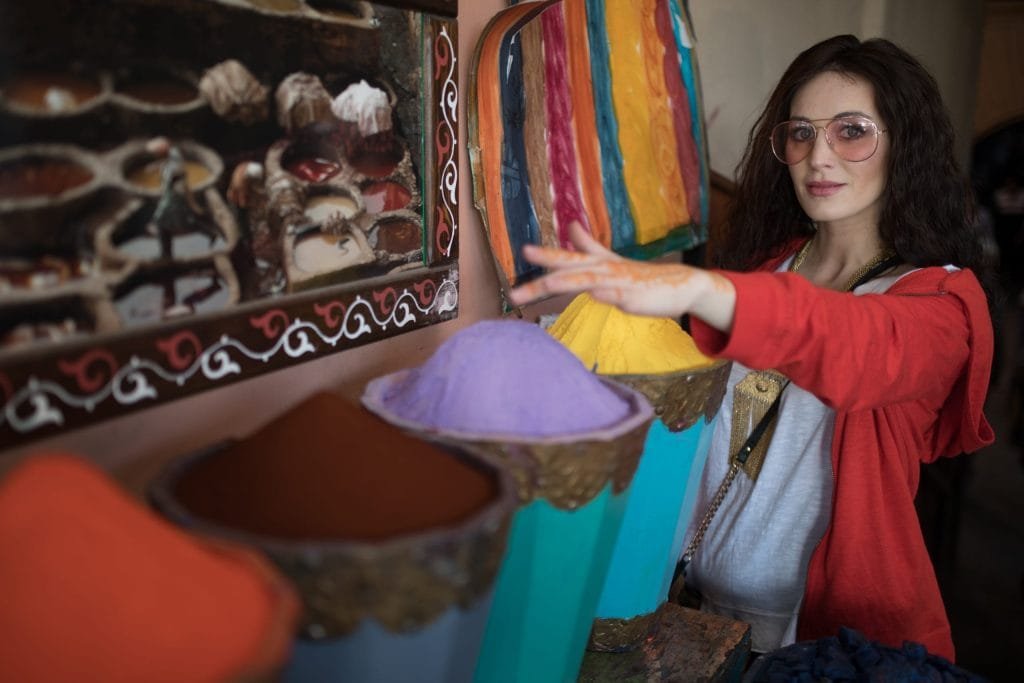
Bonus : your photos of exotic foods and decor will be more instagrammable that ever with your hands henna’ed on them !
Pro – Tip : Here is a lifesaving advice. Was you henna of 5 minutes after it’s applied. No-one told me to do it and I ended up having scars – literally, white scar-disease looking marks from henna on my skin for month. Almost 6 month or more I believe . A few years later I travelled to Pakistan and had the “real” wedding henna applied ,and this was a legit “where locals do it” kind of experience. This is how I found out that the scars I was wearing for years after Moroccan henna were not due to the chemicals they were using but simply not treating it right !
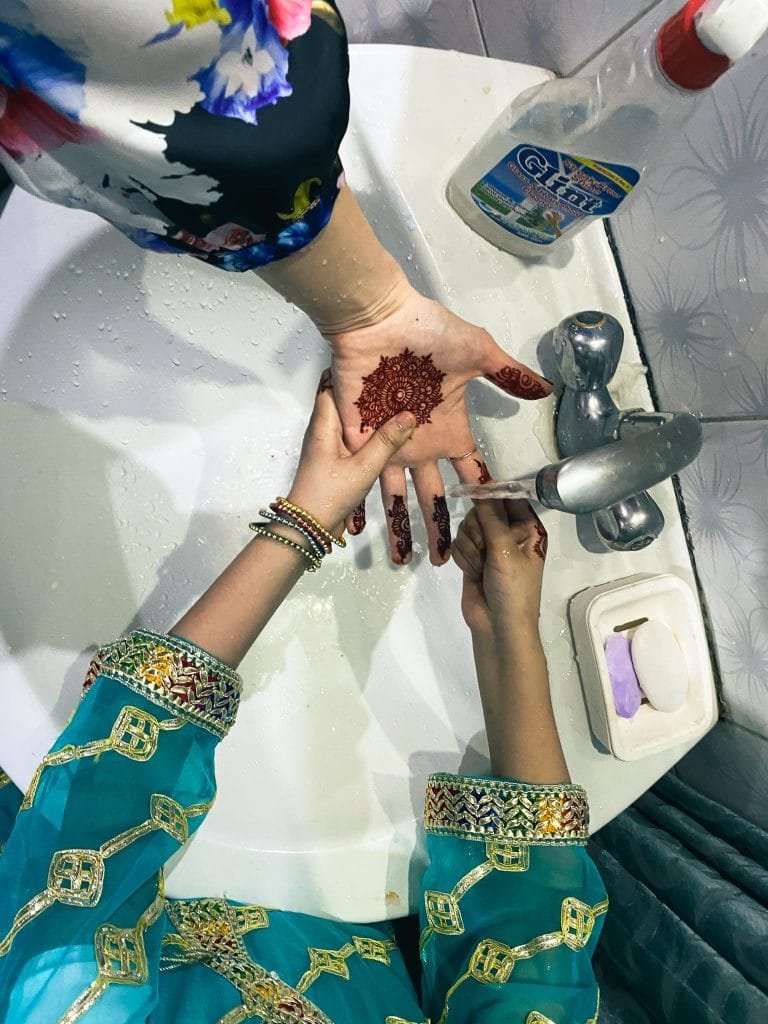
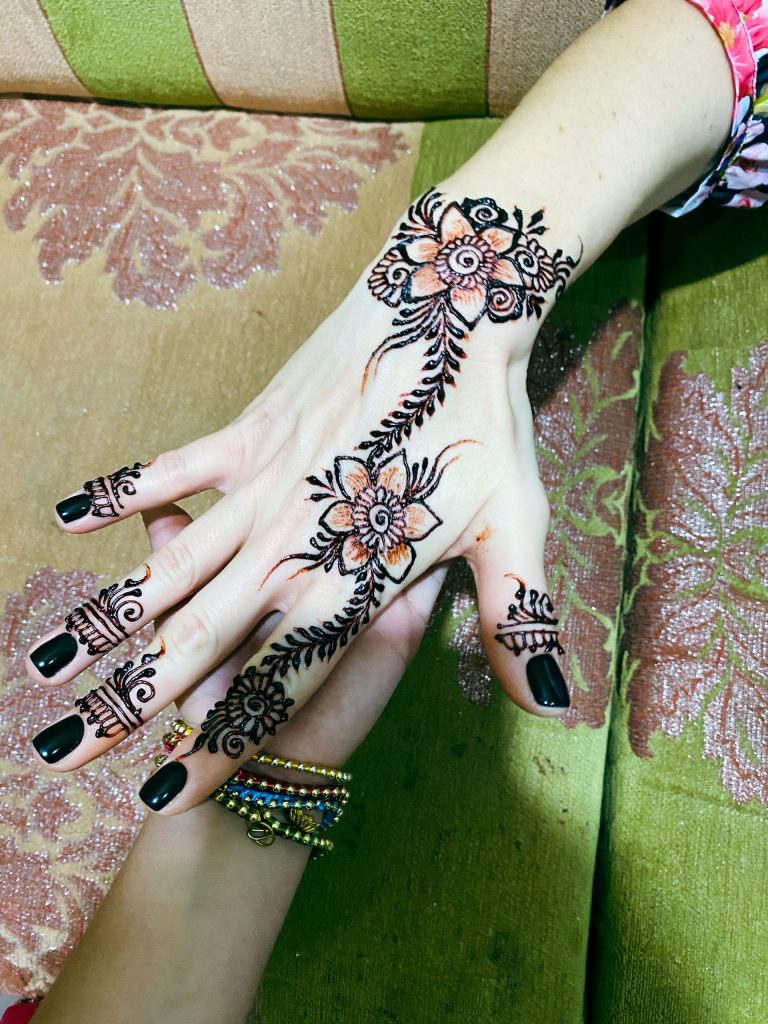
Wash it off!
2 -Visit Marrakesh Medina
Getting lost in the colorful labyrinth of narrow streets, finding not-to-be-beat bargains is an experience of a lifetime. And one of the main reasons people come to Marrakesh.
You turn around the corner and everything is purple and yellow.
Turn one more time and it’s orange and green.
The array of scents is insane— imagine mint, mixed with raw meat, freshly baked bread, turmeric and all kinds of spices .
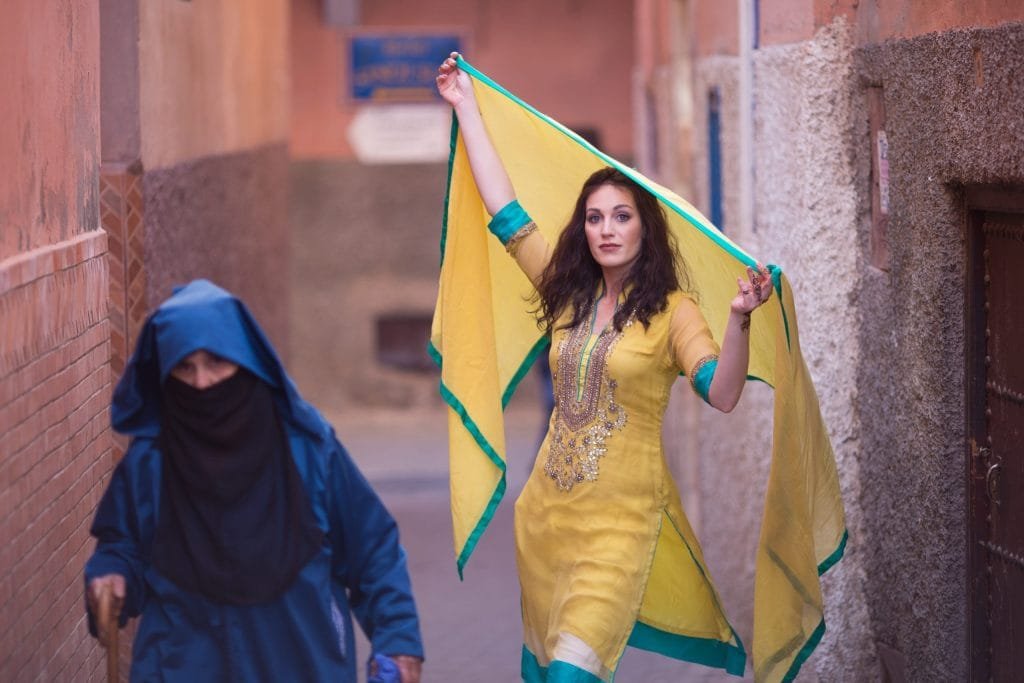
The moment you leave your riad, you can’t help but wonder if you stepped into a time machine. The streets are very narrow and fit for donkeys and wheeled carts to transport the goods. Even scooters don’t have a lot of room to move around. In those narrow streets, real-life happens: people bargain, chat, eat, shop, create, get married…
The smell of rosebuds from Dades Valley is mixed with grilled mean and mint tea, turmeric, and fruit.
Ropes. Ropes are everywhere. Men’s floor-length djellabas or multi-layered female dresses are everywhere. All of it resembles a movie prop. This adds to the medieval atmosphere.
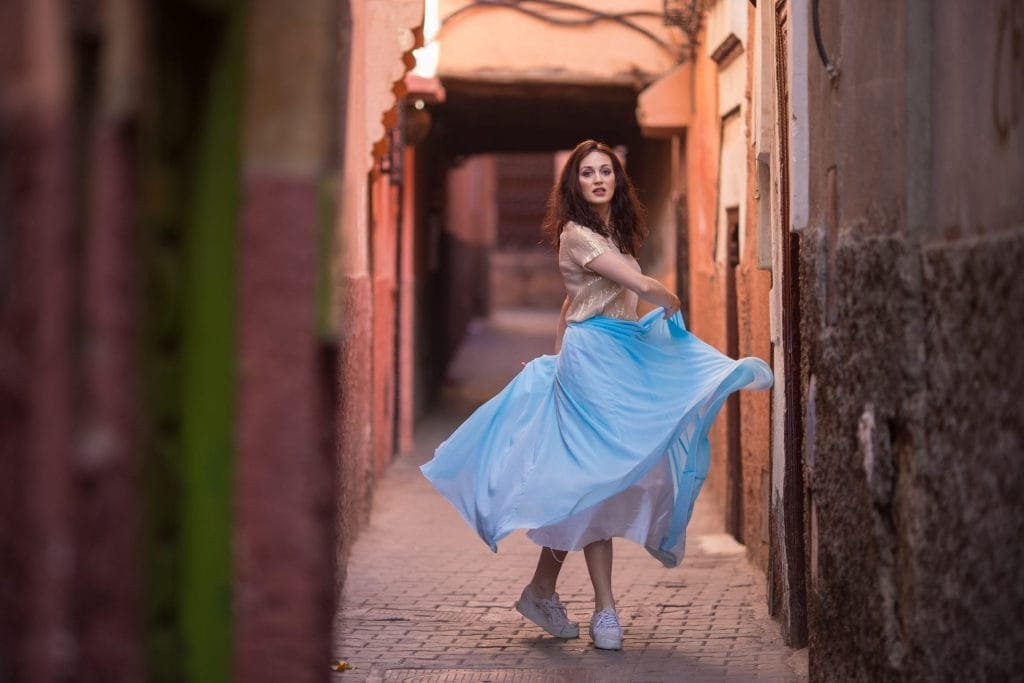
Pro Tip:
Hire a Medina GPS. You will find little local boys following you like a shadow. And when you seem to be lost, they will kindly offer to take you back t your riad for just a few dihrahms. The boys are practicing to become tour guides someday.
3 -Eat like a Sultan at Djemaa El-Fna Square in Marrakesh
Following the steps of Anthony Bourdain.
Marrakesh’s main square is called Djemaa El-Fna and pronounced ‘Jamaa Elfnaa’. This is street food heaven, so you don’t want to miss it.
During the day, the main square and its surrounding cafés are crowded by locals and visitors who enjoy a thirst-quenching mint tea or the well-known café nouss nouss — meaning half-half for the drinks proportions between coffee and milk.
This is the time of day for people watching. Street performers nail impressive acrobatic stunts in front of the busy Café de France, but wait for the radiant African sunset, and see the plaza come to life by more street performers, from snake charmers and musicians to dramatic story tellers.
Street vendors come out as the shadows get long, too, which is a fantastic opportunity to get to know a few Moroccan dishes to try. Smokey barbecued skewers, steamy fried fish, and snail broth are served in food carts lit by fairy lights. The heartwarming scent of chicken tajines fills the air, so soak up the atmosphere! The Djemaa El-Fna Square is unrecognizable after 5 pm. It becomes the famous Marrakech Outdoor Street Food Market.
Read everything about Moroccan food, how to eat and what to eat in this blog .
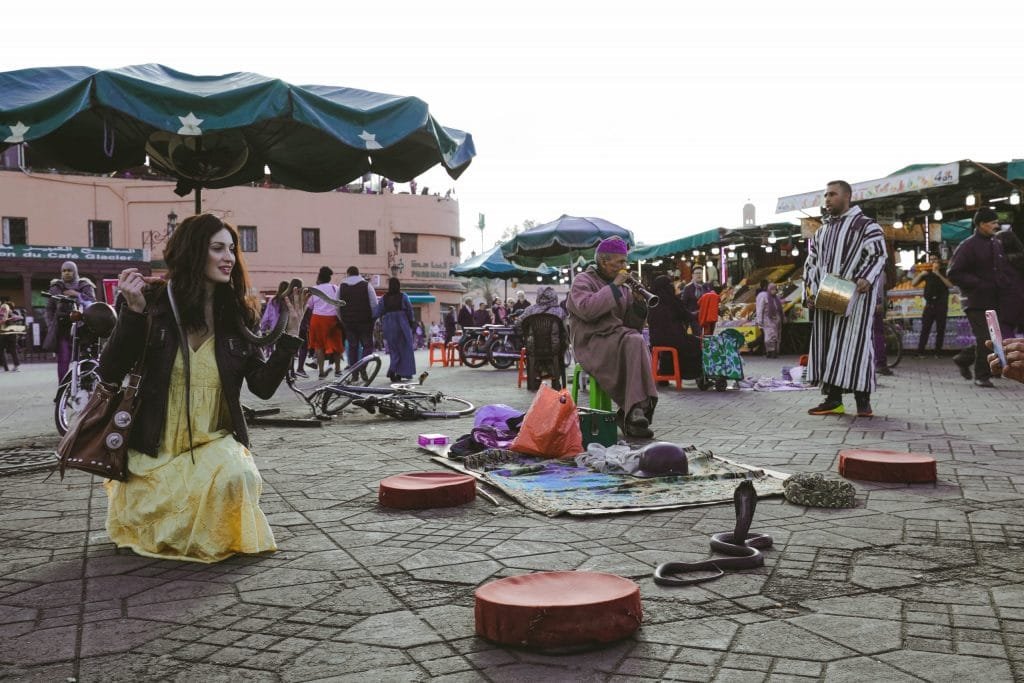
Moroccan cuisine relies heavily on street food, and you can taste it all at the night market. It comprises over 50 food stalls where everything is cooked fresh, and where you’ll find the country’s many local specialties. Some of these food stalls have been operating for years and are passed down from generation to generation.
Although there’s a thousand different spots to sit down and grab a bite, look for the terraces surrounding the square, they have an impressive bird’s-eye view of the bustling food market.
It comes without saying you’ll find many not-so-ordinary foods that might pull you out of your comfort zone. Snail soup, camel spleen and offal skewers are common, but many familiar preparations abound. There’s something to please every palate.
3 – Shopping in marrakesh
Find once-in-a-lifetime bargains
It’s hard to resist the labyrinthine souks of Marrakesh. You will most likely buy some local goodies. Here is a price guide and a shopping guide,by the way.
Set in the hectic vibe of the Medina, a paradise for the shopper of homegoods, clothing, jewelry and food . Bonus : it a lot of fun bargaining with the souk owners to buy anything from leather poufs to babouches and can count for a sightseeing activity on its own.
33 Rue Majorelle has buys of a lifetime , all in one street. Carefully selected works of local artisans, best of the best. From hand painted tea glasses and plates to delicately embodied throws and tunics.

For those who love to dig deep and bargain hard, a flea market sells antique silver and decor pieces, usually sourced from old hotels.
For true vintage affecionados, there is a vast collection of antique European furniture in Magasin General , in the industrial district.
Push through the chaos of Djemaa el Fna square, and get acquainted with Moroccan flavors. The square – however touristy it looks, is great for foodies.
5 -Spend at least a few hours in your Riad.
Morocco is home to almost 900 riads. Each one telling its story through unique hand-painted tiles, woven textiles, Berber rugs and exquisitely wood-carved columns and ceilings.
Each riad is hidden behind indistinct doors in the maze of the medina.
Whether you are in Morocco for a getaway, inspiration for your next home remodel, and re-decorating, riads bring out the mystery and the magic of Marrakech brilliantly.
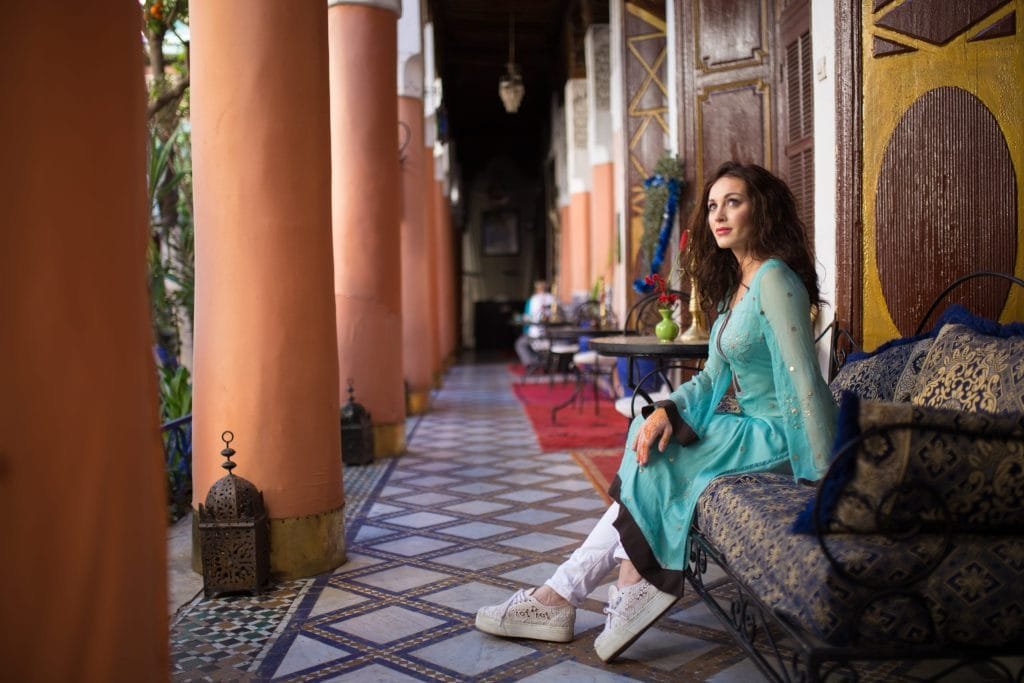
There is a lot to do and see in Marrakesh, but it is well worth it to spend some quiet time in your riad, sipping mint tea, chilling at the courtyard pool, or enjoying a traditional hammam.
Typically riads combine high impressive ceilings, bold colors caught by handcrafted ceramics and tiles, huge brass chandeliers and cedarwood carvings, opulent furnishings and everything that brings out the glory of the sultan era.
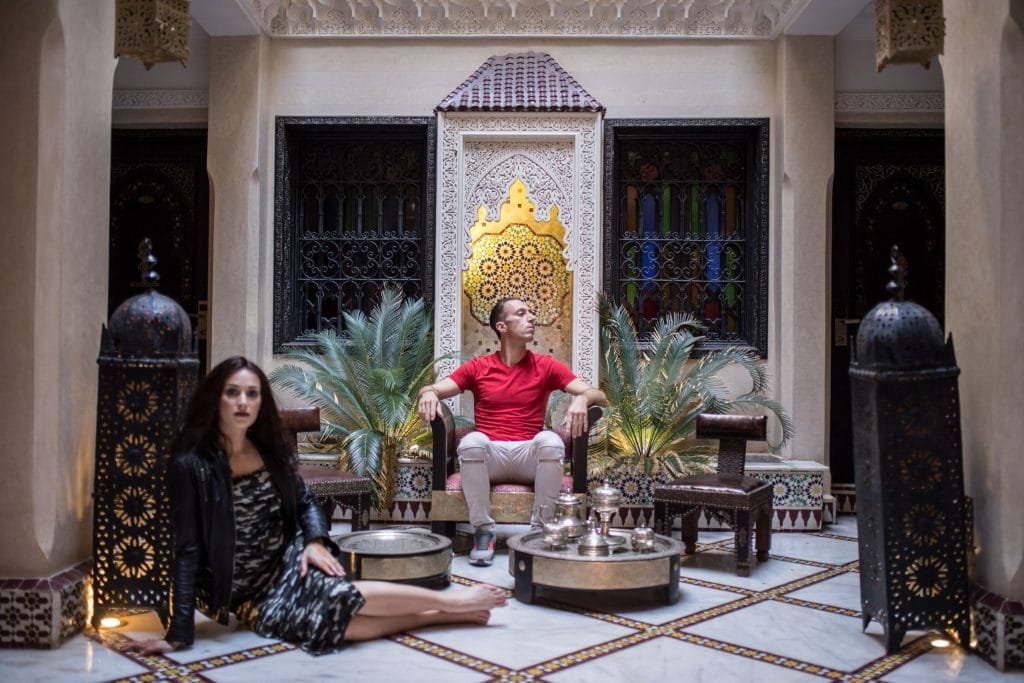
6 -Marrakesh- the city of gardens.
Marakesh is called the city of gardens, not by chance. With more than
the desert, dry all year round sunny climate combined with the runoffs from Atlas mountains makes for a perfect location.
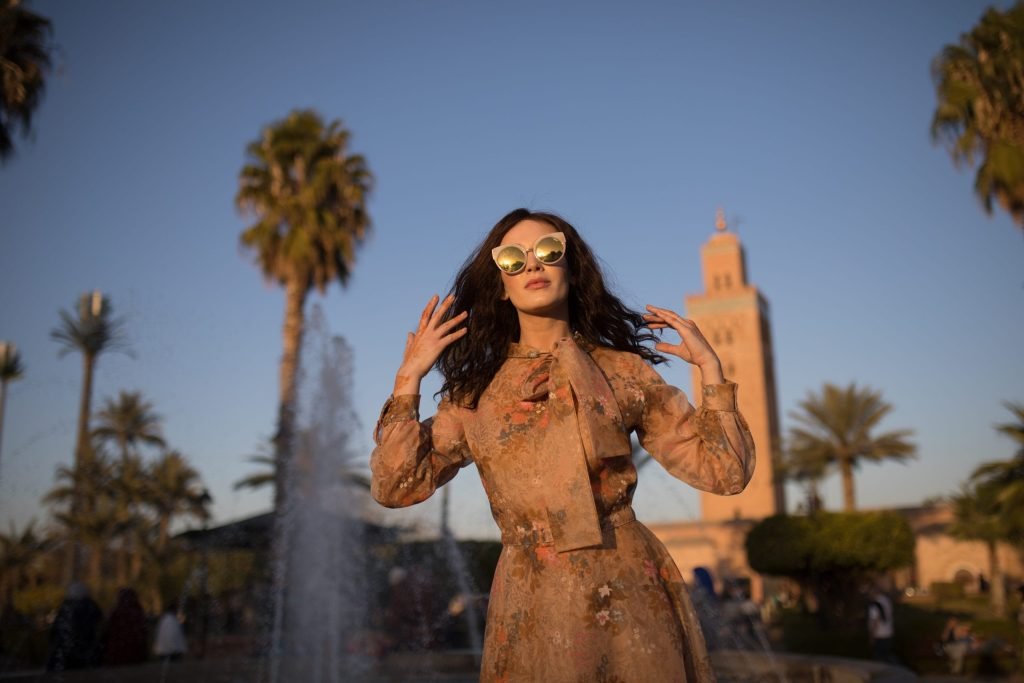
Yves Saint Laurent’s Jardin Majorelle
Yves Saint Laurent and Pierre Bergé first fell in love with Marrakesh in the 60s. And most likely, we’re the ones who spread the Marrakesh obsession around the world.
Jardin Majorelle a 12-acre botanical garden in the French district of Gueliz. The gardens were designed by Jacques Majorelle( thus the name) in the 20s.
Everything about it is very Saint Lauren. Cobalt blue and vivid yellow colored urns,
The couturier was born in Algeria. You can see his eastern influence in the vast collection of unique Moroccan textiles and jewelry displayed at the museum. The impact of color and patterns can be seen in his works.
You will see ponds, tropical flowers, cactuses 40 feet tall, hibiscus, Chair of the Mother-in-Law, an exotic thorny plant, scorpions, cats and snakes.
7 -Dance away – Clubbing in Marrakesh
Marrakesh is the clubbing capital of Africa, and it seems to be working hard towards the African Ibiza image. In a city with 1,001 clubs,you can find everything from typical techno clubs and hip hop spots to traditional belly dancer shows.
The best area for clubbing is the industrial Hivernage district.
Gueliz is well known for bars and clubs as well.
Don’t be surprised if you see Julia Roberts to Naomi Campbell partying away .
Fun Fact:
In the 70s, the square was the magnet for hippies. Kim – the local marijuana was sold on square freely.
8 -El Badi Palace
Next to the former Jewish quarter and overlooking the time-worn walls of 16th-century stands El Badi Palace. The ruins of it , to be more exact.
El Badi Palace is the most famous Palace in Marrakesh. Built after the Battle of Three Kings, with the money received from Portugal. The construction took 25 years to complete.
Marble was brought from Italy. Precious and semi-precious stones from India.
The wealth of Saudis was displayed in the courtyard. The size of the courtyard in El Badi is 135×110 m. The biggest courtyard in Marrakesh at that time was 30m…
Today there are only ruins left from what used to be 360 rooms big Palace. The Alavit dynasty demolished the Palace in the 17th century, and today, it still carries the tales of the past: there is a terrace with a magnificent view of the city, a museum, an old minaret.
Moroccan fold festival takes place here as well.
Right in front of the Palace, you will find KosyBar terrace perfect for an afternoon bite or aperirivo.
The name of the country – Morocco – is derived from the word “Marrakech.”
Or “Marruecos” in Spanish.
The country used to be known as Marrakesh,and only over time, the name was simplified to Morocco.

